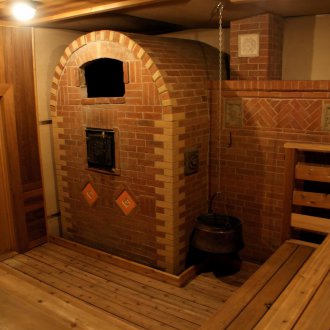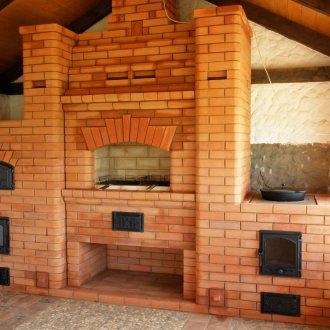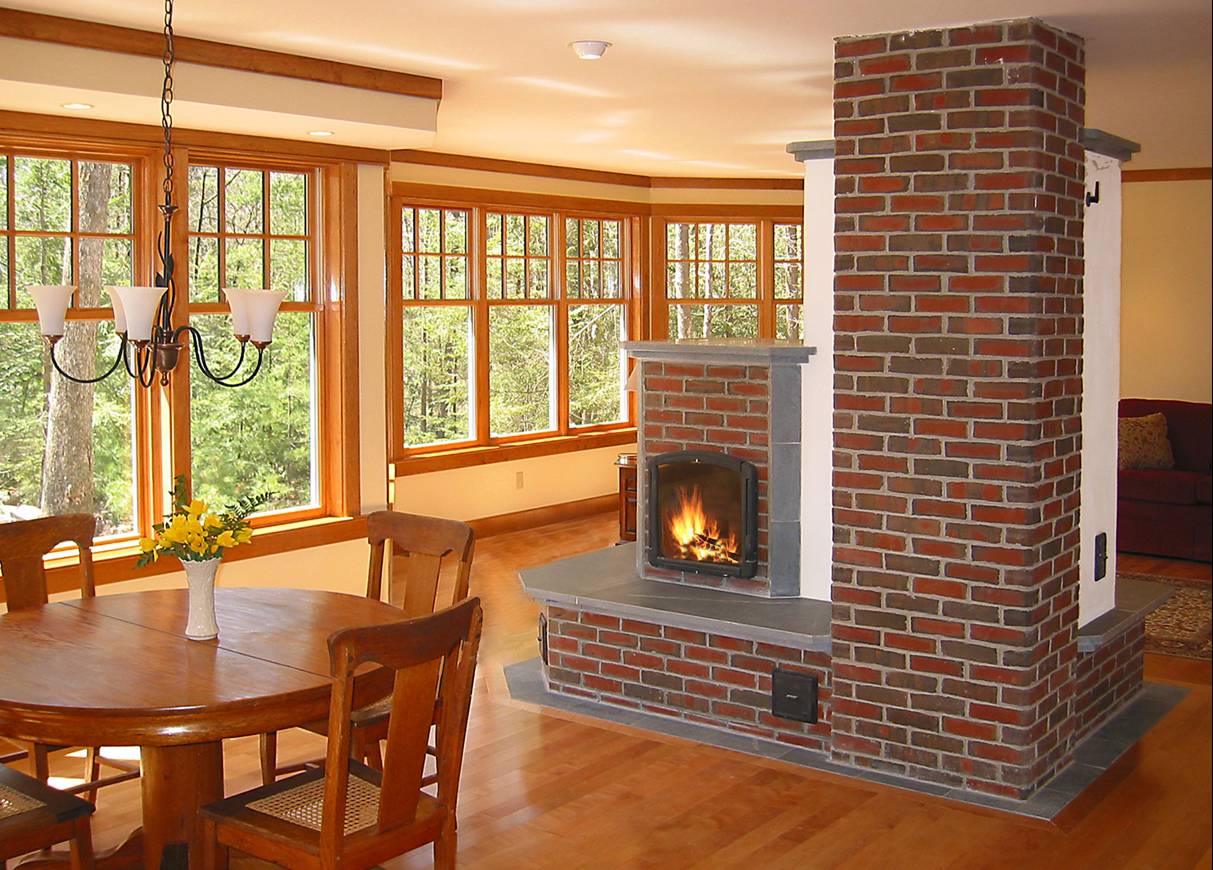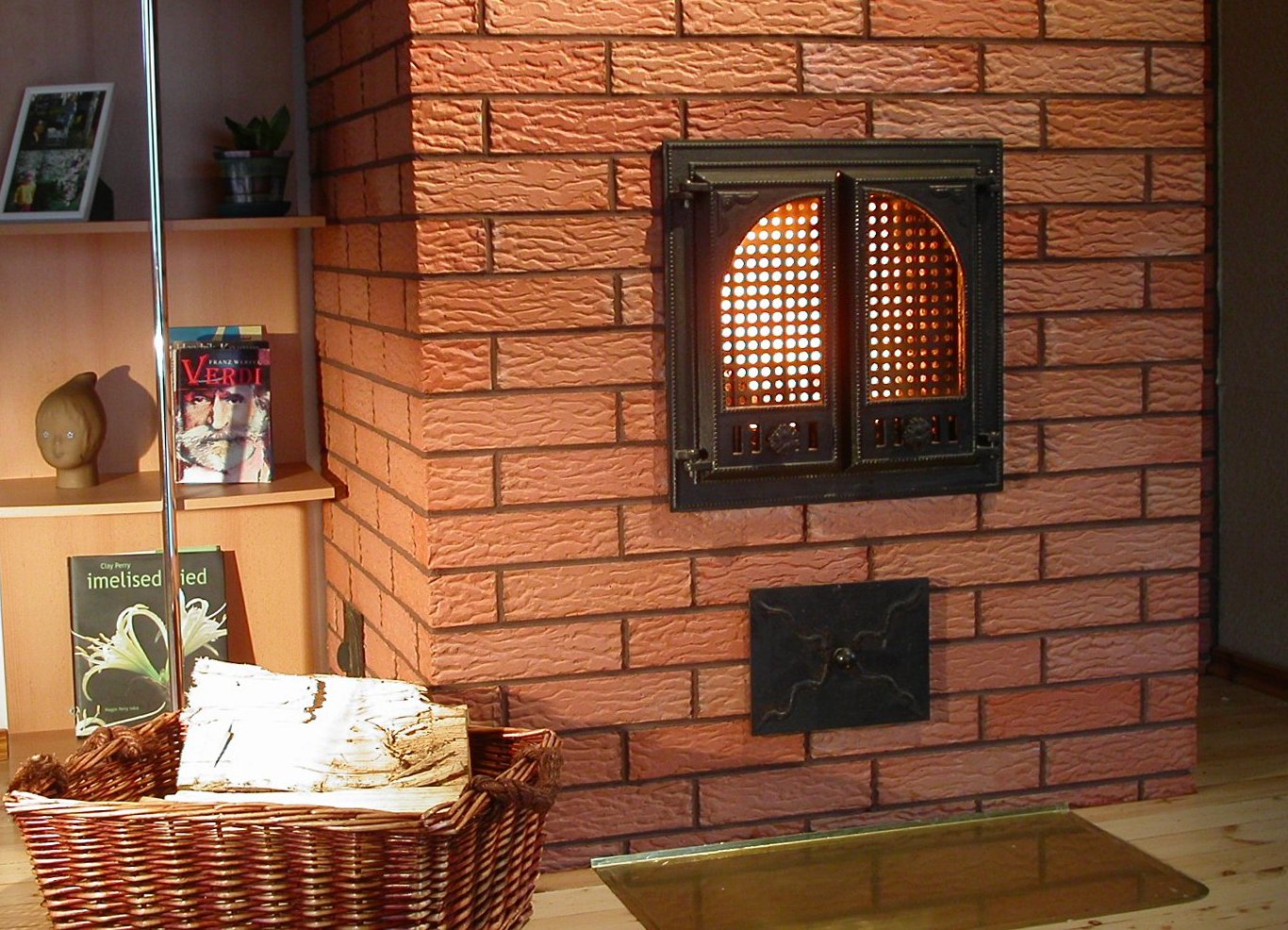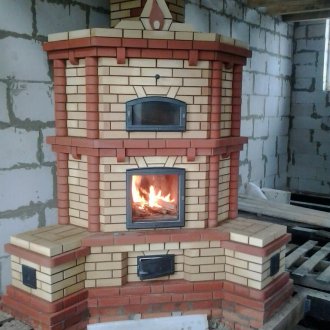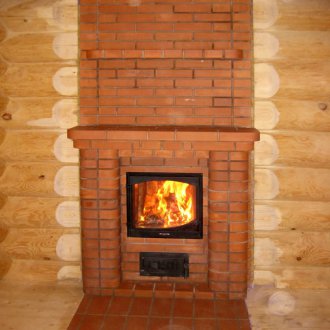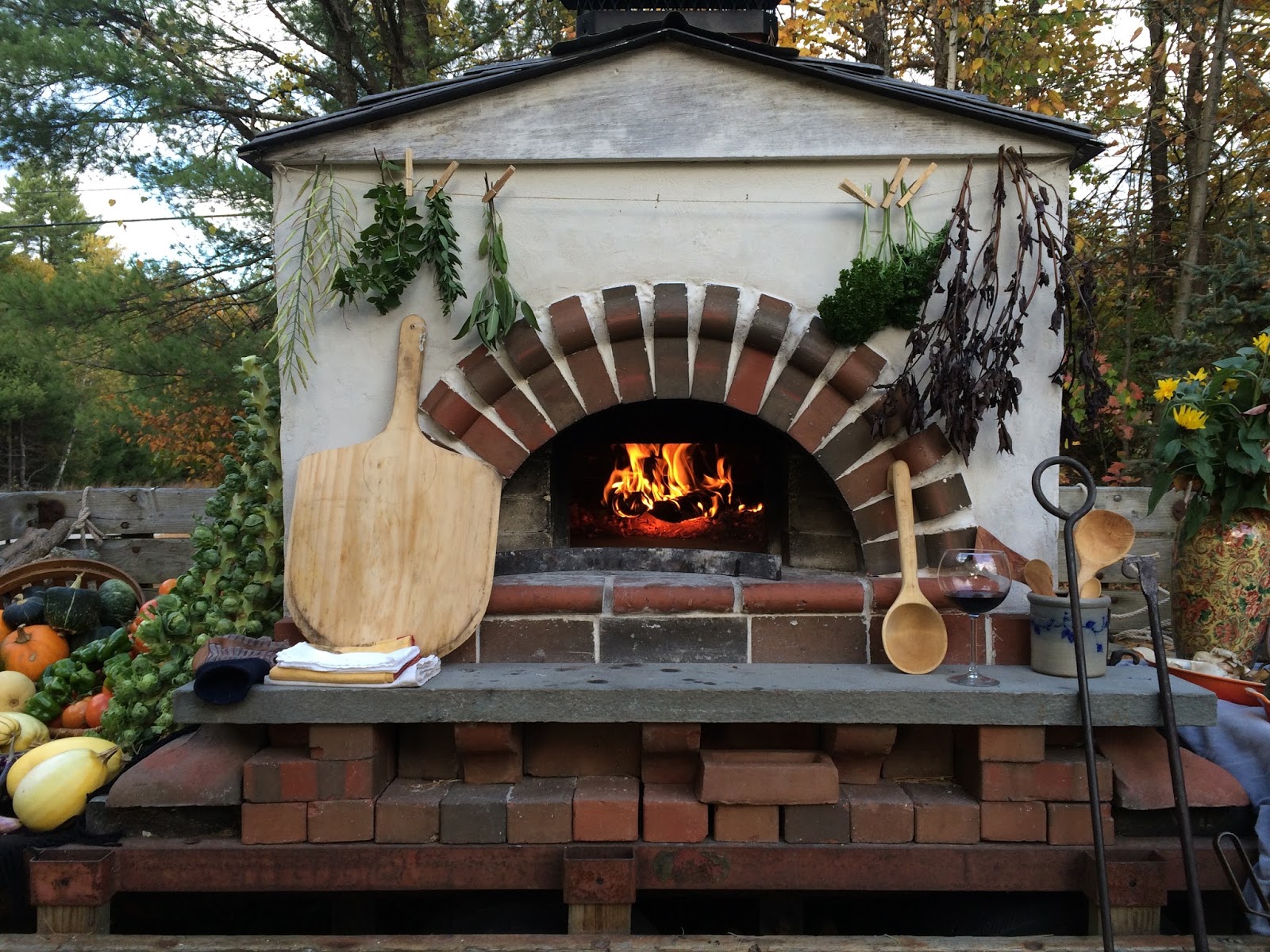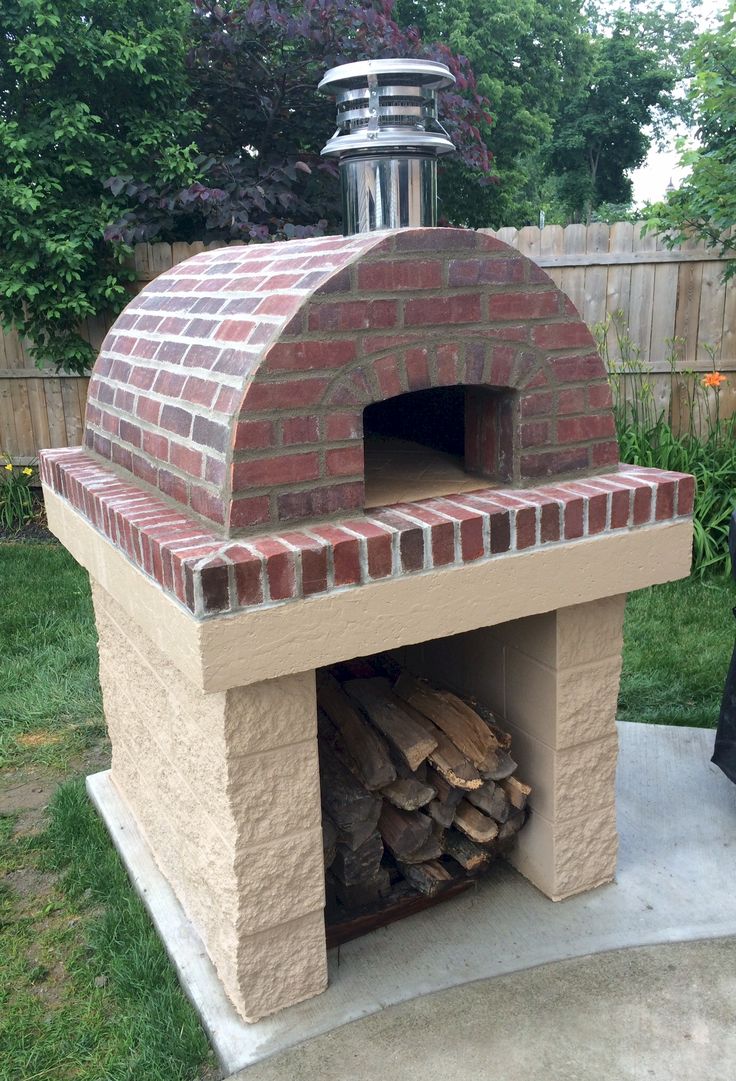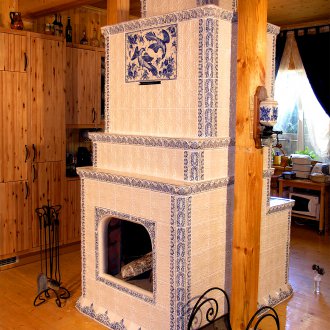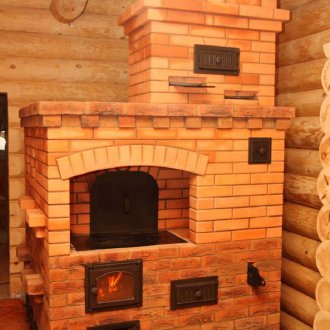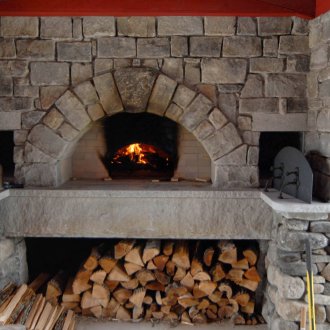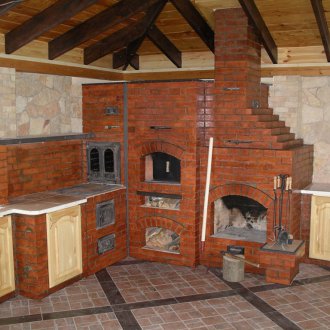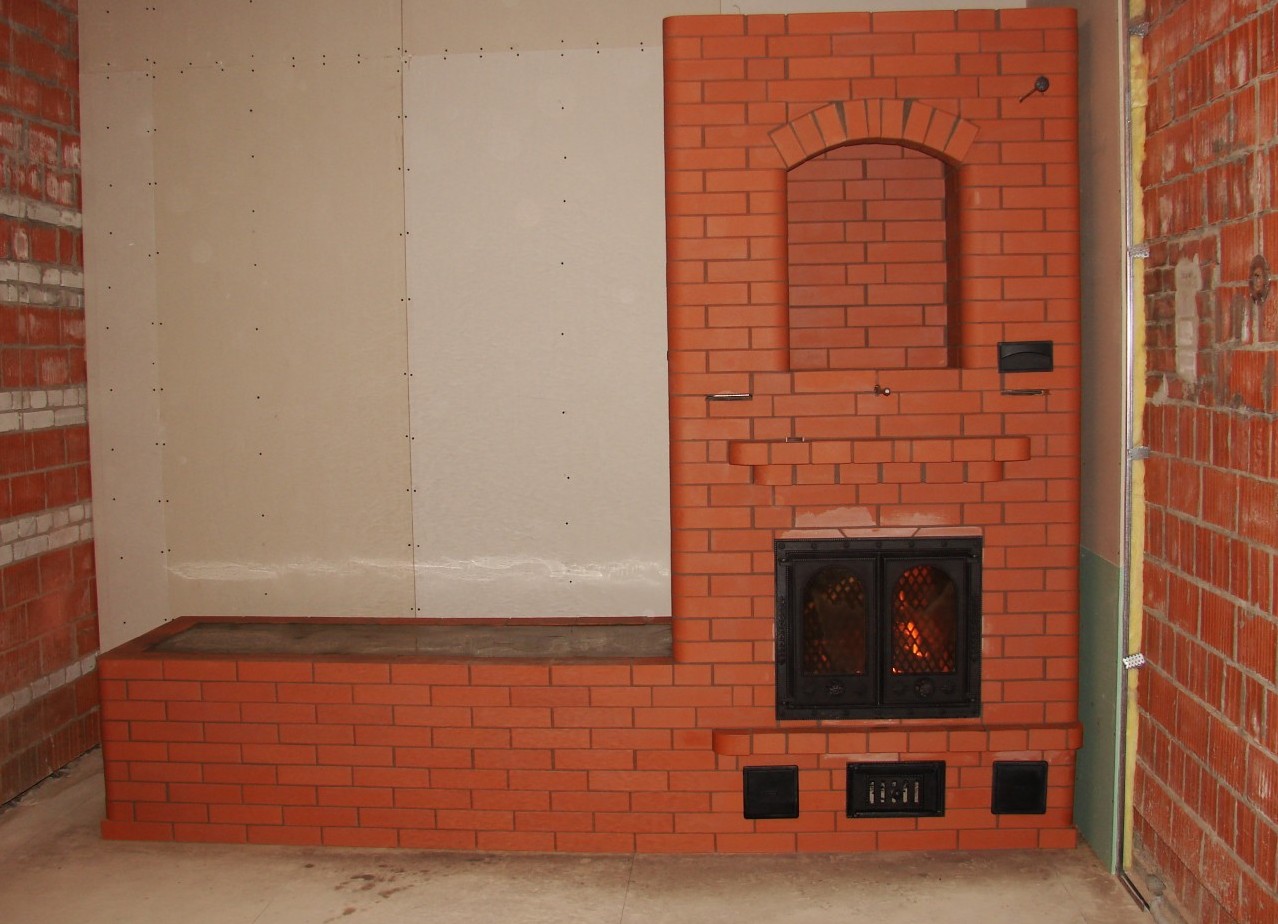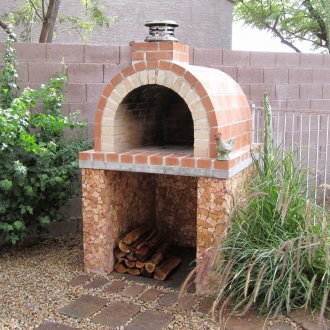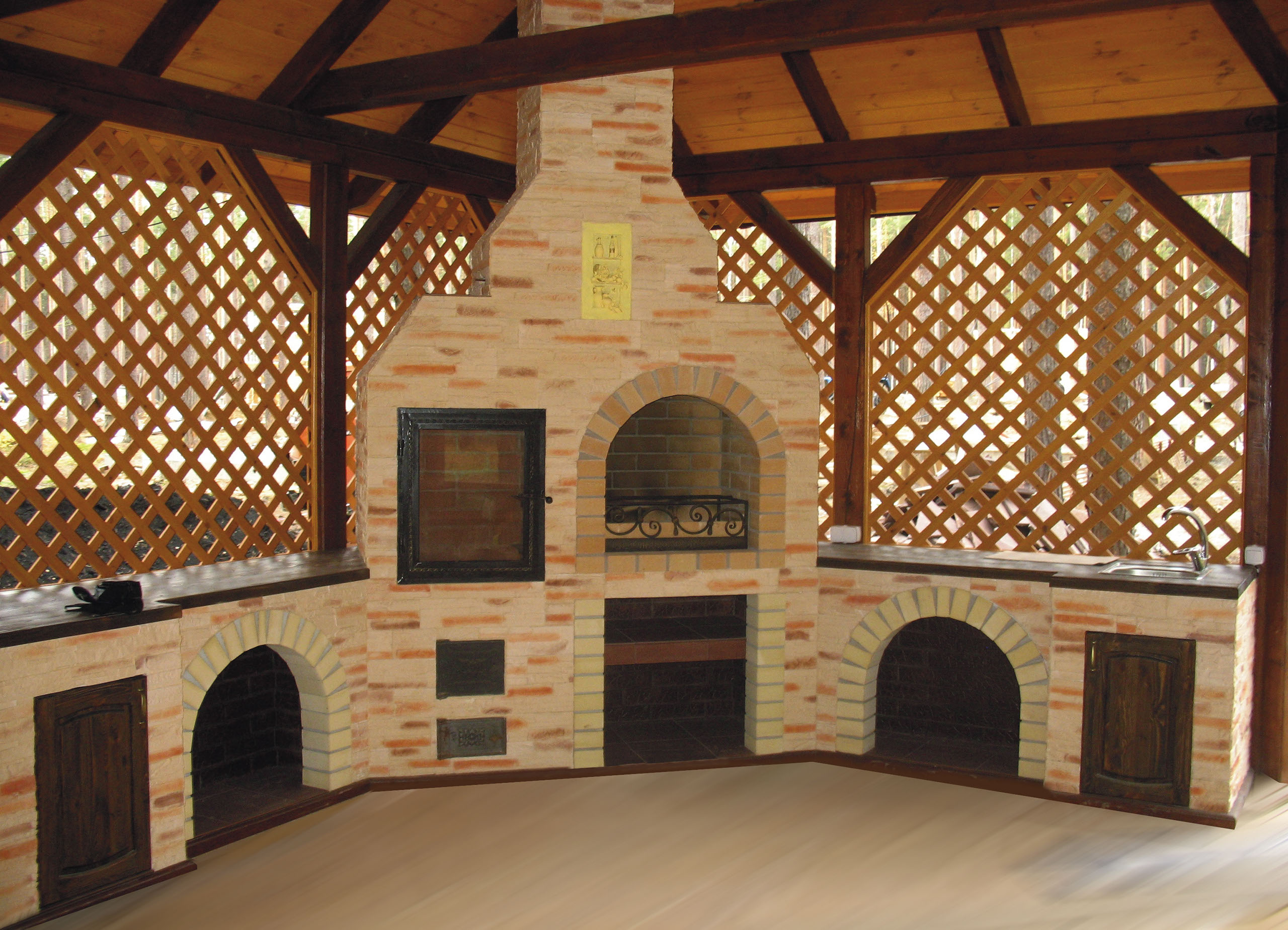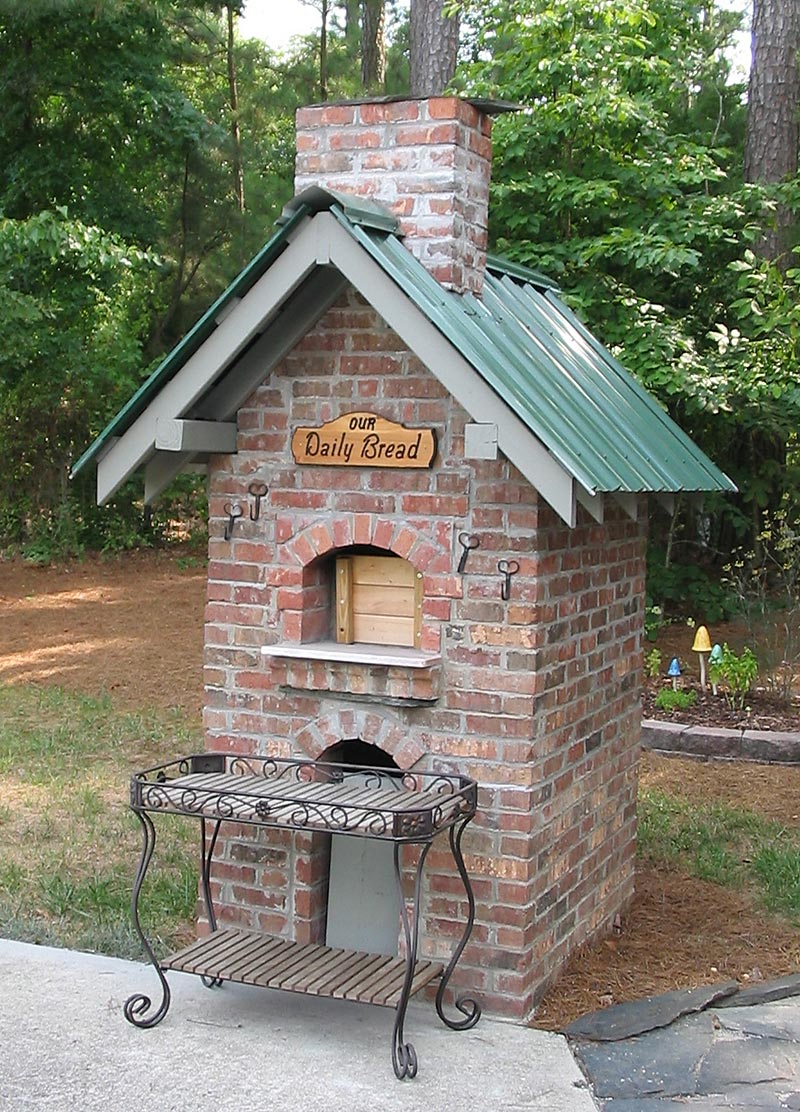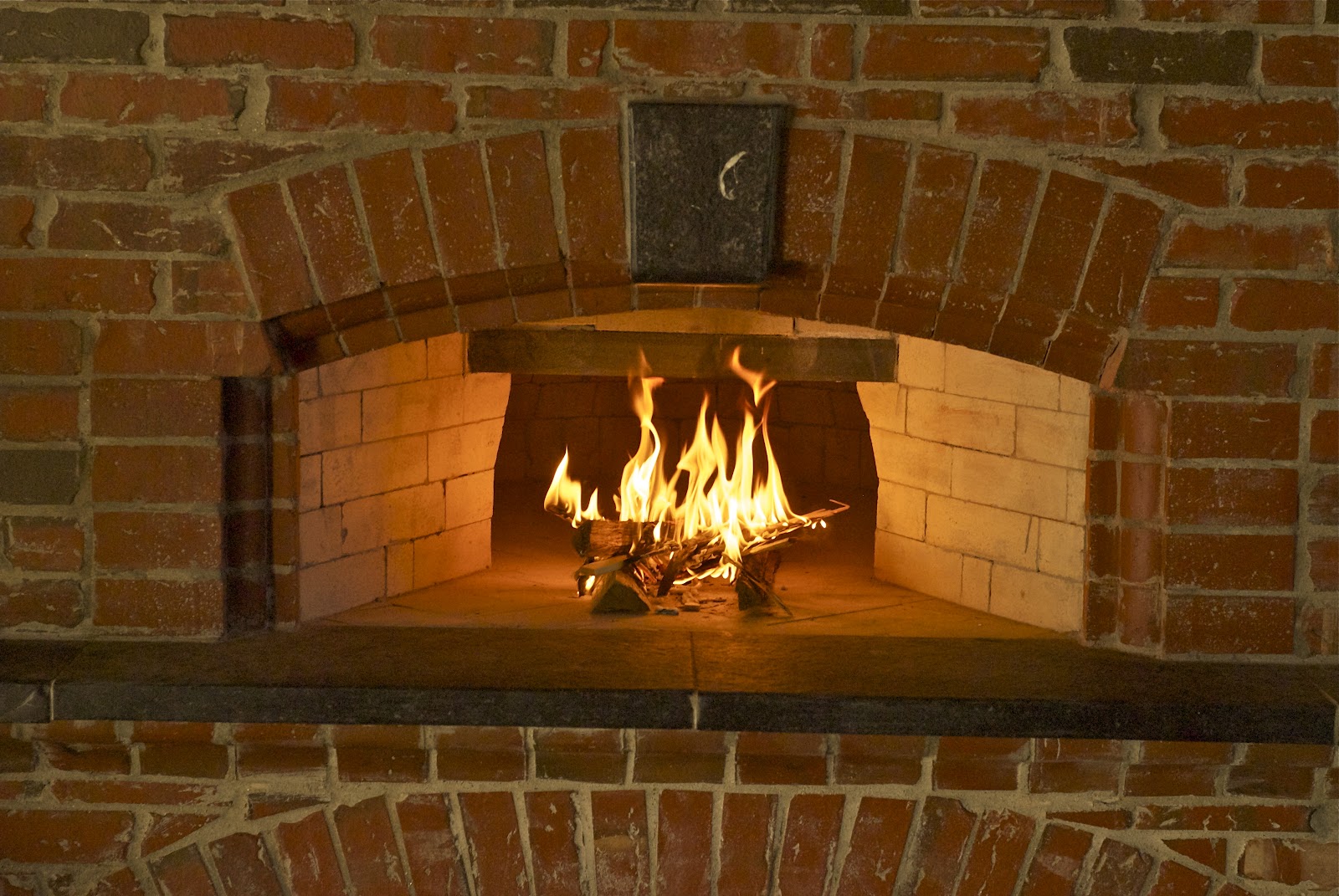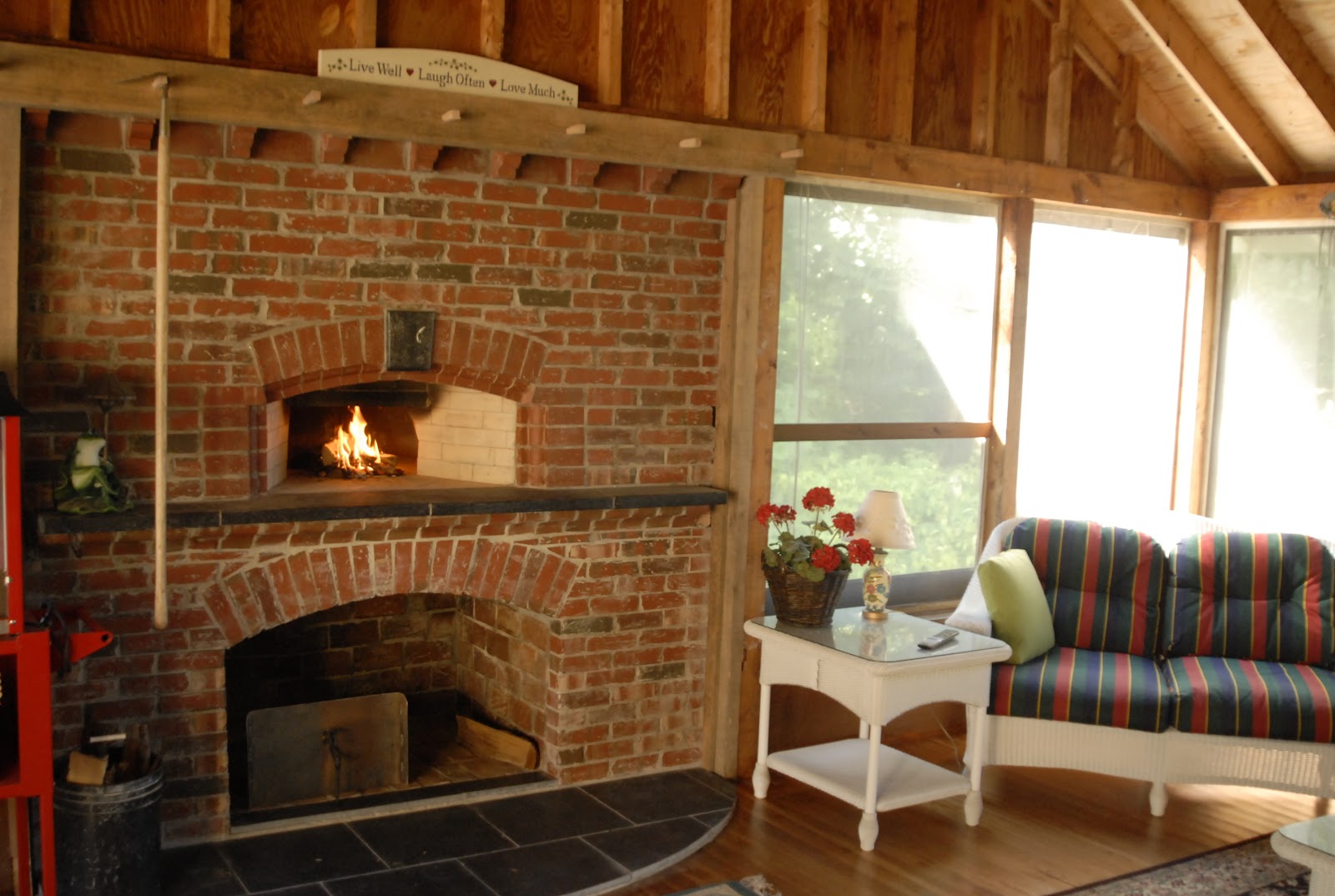Brick oven - the heart of the house (22 photos)
Content
Neither stone stoves, nor gas boilers, nor any other appliances for heating the premises that the engineers came up with were able to displace the Russian stove. This is because a brick stove for a house has a number of important advantages, because of which many make a choice in its favor.
What is a brick oven good for?
Many people opt for a brick oven, because it:
- “Breathes”;
- allows you to save money;
- fits into any interior;
- you can do it yourself.
If you want to breathe healthy air, choose brick stoves for the home. Their principal advantage is that they, in contrast to stone ones, “breathe”. The brick has a porous structure, so when heated, microscopic drops of water are released from the pores, and the air becomes moist. When the stove cools down, the brick, on the contrary, takes this moisture, the air becomes drier, so that dampness does not occur in the room. If the stove for the home is done correctly, then in the summer the room will be cool, and in winter it will be warm and dry - the perfect microclimate for health.
Even a small brick oven will help to save money significantly. If you start heating the room with it, then the launch of the main heating system can be postponed for a week, and even three for residents of the southern regions. Also, heating can be turned off a couple of weeks earlier - any brick ovens will perfectly cope with spring dampness.
If you decide that you need a brick stove for your home, consider its important feature. Until such a stove warms up by itself, it will not give off heat, so before the room gets warm in winter, the stove will need to be heated for about three hours - in severe frosts this is a decent time. But when it rushes, a comfortable temperature in the room will be maintained for almost 20 hours. This stove is ideal for heating a house because it cools for a long time.
The saving is also in the fact that such a furnace can be heated with inexpensive fuel - secondary raw materials. Wooden pallets, which many throw away, are perfect for kindling it. Thanks to several pallets left over from brick or paving slabs, even the smallest stoves can maintain a comfortable temperature in the room.
Due to the enormous popularity of brick ovens, the profession of a stove maker remains in demand. However, if you want to save money, you can try folding the stove yourself. The task is not the easiest, but if you understand the principles of the furnace and find high-quality literature on how to make a furnace, then with a competent approach to business, you will be able to do it yourself.
What stoves are there?
If you want a stove in your home, first of all, decide what you need it for. Depending on the destination, there are different types of stoves for the home:
- heating;
- heating and cooking;
- cooking;
- narrowly targeted.
Heating furnaces are also called Dutch or "Dutch". They are installed indoors as an additional or sole source of heat. If you are making a brick oven for heating, then make no mistake with the size. The stove should be proportional to the size of the room.If you make it too large, the room will be hot and stuffy, and a small brick oven, on the contrary, will not warm up a large room.
A brick oven for a summer residence most often combines two functions: heating and cooking. If the country house has a small area, and you do not live in it all winter, but spend the weekend, such a stove will be enough for heating, and you will not have to install a boiler and batteries. Namely, heating and cooking can be called the famous Russian stoves, which our ancestors used for centuries. “Swedes” are also referred to this type, as well as a more modern version - a brick oven with hobs and an oven, which closes with a metal valve. In winter, heat from such a stove will spread throughout the house.
But in the summer, cooking on such an oven or cooking jam will be very problematic: in the kitchen it will not just be hot, you won’t be able to stay in it, so if gas and electricity are too expensive, separate summer kitchens are often built in dachas and in private houses, in which brick stoves are located. In extreme heat they are cooked there, and then the whole house does not warm up.
Narrowly targeted furnaces, as a rule, have features depending on the purpose. A brick oven for a bathhouse, for a greenhouse, for a garage - each of them has its own shape, size and is located in a strictly defined place. Cooking ovens are both universal and specialized. For example, they can be for barbecue, barbecue or strictly for cooking in a cauldron. Such cooking stoves are most often installed in the yard and are used to prepare specific dishes. This stove should be set up sooner if you do not have enough gas or electric stove, which is in the house, and you want to treat guests with food prepared in a brick oven.
Types of furnaces
Over a long history, engineers in Russia and Europe have developed a wide variety of brick kiln designs. Some were less successful, but many took root and remain in demand today.
Ovens come in many forms. Most Popular:
- round;
- rectangular;
- angular;
- T-shaped;
- square.
The choice of form depends more on the individual preferences of the customer, the size of the room and the characteristics of the interior. When designing a furnace, you need to pay attention to another important indicator - the wall thickness. In this case, they are:
- combined;
- thick-walled;
- thin-walled.
If the furnace is needed exclusively for heating the house, then it should have thick walls. Of course, it will take longer to kindle it, but it will maintain the optimum room temperature for almost a day. Thick-walled and combined stoves are suitable for a country house without heating. And if you need a stove more like a decorative element, then its walls can be thin.
Placement of a brick furnace in the house
Choosing a place for the stove in the house must be considered. It should stand in the house so that the heat spreads throughout the house evenly, and the stove warms up all the rooms. That is, it turns out that approximately the stove should be in the middle of the house. If you make a mistake with the place, you will have to put another stove in the house or arrange heating for the house with a water circuit.
When placing a heating and cooking stove in the kitchen, keep in mind that the adjacent room will also warm up well. If the area is large, then you have to put the stove in the back room. If you do not want to spend time on this, you should choose a universal option - brick stoves with a heating boiler, which are suitable for any home. Such stoves not only heat themselves, but they also heat the water that moves through the batteries and enters the faucet in the bathroom and kitchen. This is convenient if it is not possible to conduct gas or install an electric heater, but on the other hand, you will have to spend a lot of time and money on buying coal or firewood for such stoves.
Ovens are often placed for decorative purposes.In this case, designers recommend purchasing a fireplace stove for a summer house or a country house. Thanks to the special design, you can enjoy the view of a calmly burning flame in winter. By the way, installing such a stove is more appropriate than installing a conventional fireplace. The fact is that fireplaces do not hold heat as well as a stove does. When the fireplace is burning, it is very comfortable to be in the room, but if it goes out, the air in the room cools instantly. But the fireplace stove even after attenuation keeps heat for several hours.
For a country house of a large area, it is generally advisable to choose a project for combining a stove and a fireplace. It is very convenient and functional. For example, in the kitchen, make a stove, and place a fireplace through the wall in the bedroom or hall. They will be able to work independently of each other, but at the same time the entire chimney system will be common. If you want to build several stoves in the house, then you will have to make separate chimneys for each of them. They are not so difficult to make if they are initially planned in the project of a house under construction. A tme who makes at least one stove in an already built house needs a lot of time and effort. It is in these cases that it is best to combine it with a fireplace in order to immediately kill two birds with one stone.
Ideally, the brick oven should be located in the coldest room. If it is located at the junction of several rooms, then it should join the widest wall to the coldest room. For example, you can make a do-it-yourself oven in a room with a balcony or the largest window.
At the same time, if the stove for a wood-burning house comes into contact with several rooms, it is better to place its firebox in the corridor or in the kitchen, because you will always have to bring firewood, from which rubbish will be dumped. And even better if it pollutes the floor in the kitchen than the carpets in the bedroom or living room.
You need to understand that a wood-burning heating stove in a house is not an electric heater that can be moved, so you need to carefully plan its location. Moreover, it is necessary to calculate immediately not only where it will be located, but also how the stove chimney will go out. Immediately at the project stage, you need to see how to lay the stove on the spot. If this is not done, then in the process of its construction it may turn out that the chimney abuts against the roof beam or in the attic rafters.
Furnace decoration
Sometimes it is not enough to carefully lay out a brick oven. To fit into the interior, it needs to be stylishly decorated. The easiest and most common way is painting. Not everyone knows how to paint a brick oven and how to choose this paint, but in fact the same coating is suitable for the furnace as for ordinary walls. If you want the stove to be like in Russian fairy tales, you can whitewash it with lime or chalk. These finishing materials allow the brick to “breathe” better, and they also emphasize its texture. Furnaces for giving are covered with chalk or lime. These are relatively cheap materials. And as you get dirty, it won't cost you to whiten the brick oven again.
Heating furnaces are recommended to be coated with oil or enamel paint. It is believed that a brick coated in this way emits heat more actively. Moreover, the darker the paint, the stronger the stove warms up the room, but you need to choose paints for wood-burning brick stoves that are not afraid of heating and do not smell and emit toxic substances when the temperature rises. No need to paint the oven with paints on aluminum or linseed oil. Use pentaphthalic, nitro paints and other synthetic products. High temperature resistance is a mandatory requirement for the paint coating of any wood-fired brick oven.
A brick sauna stove is usually not decorated. Even if you choose a high-quality paint or whitewash, from constant contact with water and high humidity, it will quickly change color.And then beautiful stoves, neatly laid out, do not always require additional decor, so wood stoves for a bath are usually additionally sewn up with a new red brick, which is not covered with anything else. Also, garden stoves: either covered with whitewash, or the brick is not painted at all.
Any long-burning brick furnace from an item of necessity can turn into an exquisite piece of furniture. To do this, it must be lined with ceramic tiles. For several centuries in a row, facing a brick oven has been a real art. First in Europe, and then in Russia, beautiful ceramic tiles began to be made. They were painted manually with intricate patterns. On the small ceramic tiles appeared real paintings telling about hunting, village life, sea voyages.
Today, the idea of using tiles as a facing material for heating furnaces is still relevant. And here you can choose the material for any wallet. So, stoves for summer cottages are laid out with cheaper tiles. It especially resembles old stoves, which still warm very well, but have long lost their presentable appearance. For a country house, a stove lined with an inexpensive light tile will become a real decoration, and a stove decorated with bright ceramic tiles will fit into a richer interior.
If you make the oven yourself
If you decide to make a brick oven with your own hands, keep in mind that a small oven, not more than 700 bricks, can easily be put directly on the floor. But for a more massive design, you will need to make a foundation. In order for the furnace to economically consume fuel, several layers of roofing material are placed between it and the foundation. Then the brick will not absorb excess moisture, which means that it will be better to keep heat, longer will not collapse.
Doing an oven yourself is only necessary if you are fully confident in your abilities and thoroughly studied all the design features. An improperly designed stove can cause fire or carbon monoxide poisoning.
Today, stoves are classified according to various criteria. And in order not to make a mistake with the choice, you need to clearly understand why you need this oven: for heating, for cooking or for beauty. In the country, where you rarely visit, it is better to install small stoves that warm up quickly enough and warm the room. And in the house where you live constantly, a bulky stove, which holds heat for about a day, is more suitable. And before choosing which stove to build: wood or coal, ask how much each type of fuel costs in your area.
Approach the design thoughtfully and thoroughly, consult with professionals, do not spare money for a good brick and beautiful facing material, and then a quality stove will appear in your house that will warm you for many, many years.
